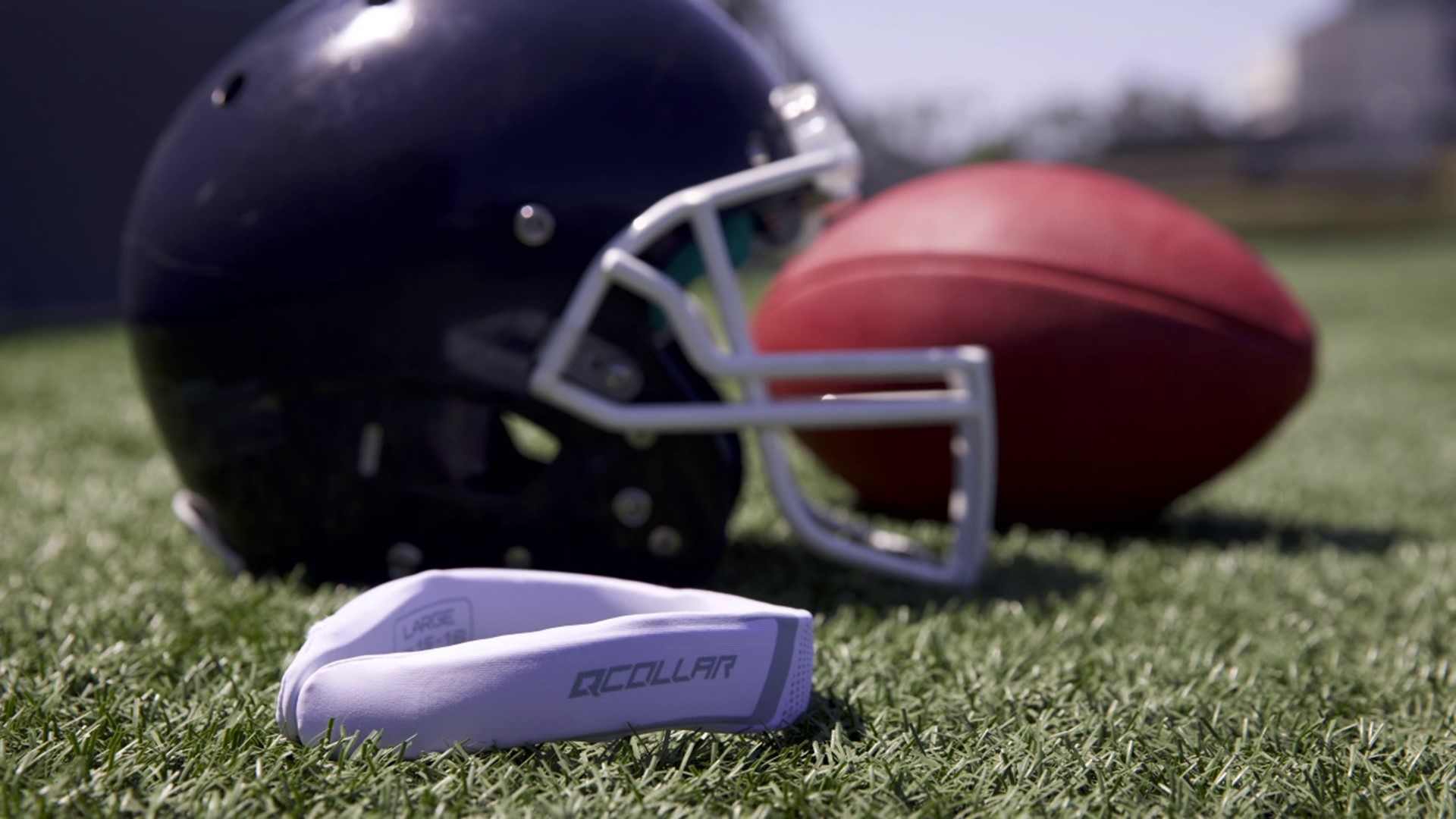YORK COUNTY, Pa. — Head injuries are a major concern in the world of sports, as athletes face potential long-term consequences from repeated head trauma.
However, there's now a small, simple piece of equipment with a big goal, to protect athletes' heads and brains.
The Q-Collar, a wearable device similar to a headband, is rapidly gaining popularity.
It's designed to mitigate the effects of repetitive sub-concussive head impacts by using gentle compression to jugular veins in the neck. The pressure slightly increases blood volume in the brain, which reduces the brain's movement upon impact.
"I'm a firm believer in what's the simplest thing you can do to protect what's most important," said Dr. Wayne Olan, the director of minimally invasive neurosurgery at George Washington University.
He explained the Q-Collar like this:
"You have a structural housing, but then you have a bag inside that housing, and then all the stuff that's important is inside the bag. So you have this potential space between the bag and the housing. If I can fill that potential space up with something, so what's inside the bag can't move around at impact [then] that's the basis of it."
Dr. Olan is also a high school lacrosse coach, while concussions get most of the focus in the sports world, the Q-Collar intends to protect athletes from repetitive blows.
"What we're trying to do is take a seat belt and hold your brain steady inside your skull," he explained.
Q-Collars are gaining attention as various professional athletes wear them. Locally, one college athletic trainer has noticed more athletes wearing the device.
"College athletes are going to try and do whatever to keep them on the field the longest," said Dr. Emily Dietz, the head athletic trainer at Elizabeth College. "If they see that there is some type of science behind it, they're going to try it out. If they like it, they'll use it, if they don't like it, they won't use it."
The Q Collar was approved by the FDA in 2021 and is designed for athletes 13 years old and older. A two-year study conducted by the University of Cincinnati Children's Hospital showed that 77% of the collar-wearing athletes did not have significant changes to the white matter of the brain, while 73% of the non-collar-wearing athletes had significant changes.
The FDA's approval summary also stated a link between the changes the studies revealed and actual brain injuries has not been “validated.”
“I think the only negative effect is it might provide a false sense of security," Dr. Dietz offered. "It might [make] these athletes [think], 'Oh, I have this cue collar on, I can go bang my head into this other athlete. And I'll be okay I'll be protected.'”
However, the FDA noted that "the probable benefits outweigh the probable risks."

